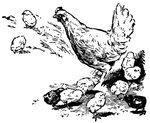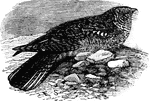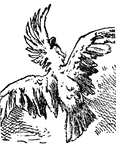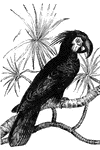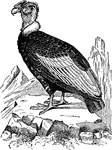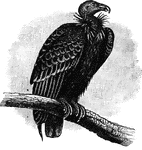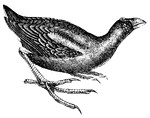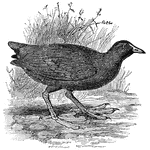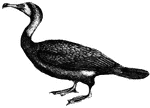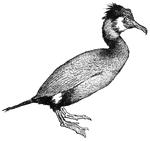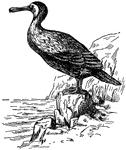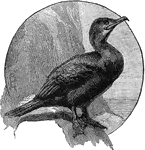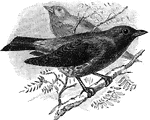218 illustrations of birds including: calyptomena, canary, capercaille, caracara, cariama, carrion-crow, cassican, cassowary, cat-bird, ceyx, chiff chaff, chaffinch, chat, chick, chickadee, chicken, chough, chuck-will's-widow, cock, cockatoo, columba, condor, athene conneviens, coot, corella, cormorant, cotinga, courser, cow-bird, crane, creeper, criniger, crossbill, crow, crypturus, cuckoo, curassow, and curlew
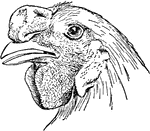
Chicken Head with Walnut Comb
A head of the walnut comb chicken. The breeding of the rose and pea comb chickens results in a walnut…
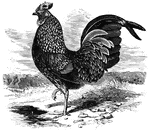
Kulm Rooster
Measuring twenty-six inches in height, the kulm cock is believed to have been brought from Java or Sumatra.

Prairie Chicken
"Prairie Chicken is the popular name of the pinnated grouse of the United States. The neck of the male…

Chough
Also known as the red-legged crow, the chough is about sixteen inches in length, feeding on insects,…
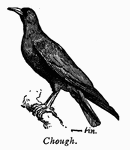
Chough
Chough, a European crow with a glossy black color, with bill, legs and feet a bright cherry red.
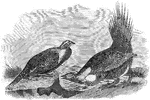
Cock of the plains
An illustration of two cock of the plains also known by its scientific name Centrocercus urophasianus.
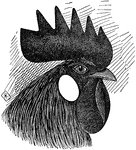
Head of Single-Comb Brown Leghorn Cock
"The comb is single, of medium size, perfectly straight and upright upon the head, free from side sprigs,…
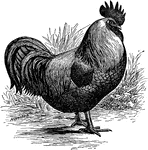
Silver Gray Dorking Cock
Dorkings are well known for their egg and meat production. The breed is very docile, but can have tendencies…

Single-Comb White Leghorn Cock
"Leghorns are the best known of the egg-producing varieties or Mediterranean class. They are the premiers…
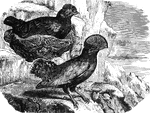
Cock-of-the-Rock
Approximately the size of pigeon, the cock of the rock has a distinctive crest of feathers arranged…
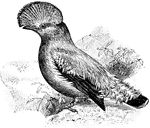
Cock-of-the-Rock
These singular birds have an erect compressed semicircular crest and the plumage of the male ranging…
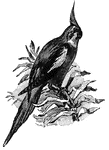
Cockatiel
A bird about 12 inches long, with a pointed crest somewhat like a cockatoo's. Long exserted midle tail…

Cockatoo
Birds for the most part white, tinged with sulphury yellow or rose-color, and with elegant recurved…

Leadbeater's Cockatoo Sitting on a Tree Branch
"Cacatuo leadbeateri, Leadbeater's Cockatoo, has a red crest banded with yellow and tipped with white,…
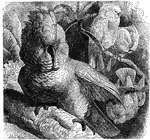
Molucca Cockatoo
"The Leadbeater's Cockatoo is a remarkably handsome bird, which calls forth much admiration."

White-crested cockatoo
The white-crested cockatoo possess a distinctive crest of feathers it can raise or lower at will.

Yellow-Crested Cockatoo
The yellow-crested cockatoo is from the order of true parrots and is known for its white feathers and…
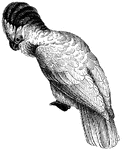
Cockatoos
Parrots are much appreciated on account of their memory, and also for their habit of repeating what…
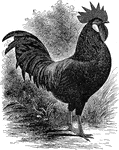
Black Minorca Cockerel
The Minorcas are similar to the Leghorns, with their main value being egg-producing. The produce less…
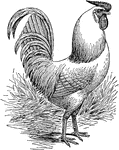
Rose-Combed White Leghorn Cockerel
"The Rose-comb White and Rose-comb Brown Leghorns have a small rose comb, square in front, firm and…
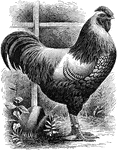
Silver-Laced Wyandotte Cockerel
The silver-laced wyandotte is the base for all other colors of wyandotte, of which there are 17. It…
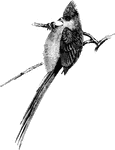
Cape Coly
"Colius capensis, or Cape Coly, has two stripes of black on the back enclosing one of white, the bare…
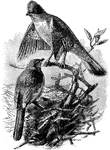
Two Grey "Coly-Shrike" Birds Sitting on Tree Branches
"Hypocolius ampelinus, Grey "Coly-Shrike", the plumage is soft, with characteristically stiff shafts…
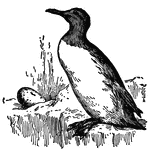
Common Guillemot
The Common Guillemot (Uria troile) is a member of the auk family. It breeds on all rocky coasts of the…

Condor
The Condor possesses extraordinary tenacity of life. Humboldt relates that he found it impossible to…
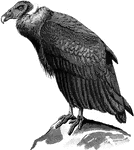
Condor
"On the Sarcorhamphus gryphus the Condor, the head and neck are bare, with dull red skin, wrinkled in…
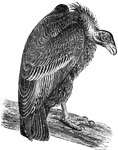
California Condor
"Pseudogryphus californianus. California Condor. Adult: Blackish, the feathers with browner tips or…
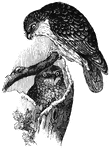
Athene conneviens
Athene conneviens, which derive their name from the Greek goddess of wisdom, supposedly for their meditative…
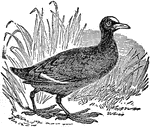
Coot
Coots , are medium-sized water birds which are members of the rail family Rallidae. They constitute…

Coot Head
"Fulicia. Coot. Bill and frontal plate much as in the Gallinultes. Body depressed; the under plumage…
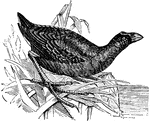
The Bald Coot
"Coots but rarely traverse firm ground, where they walk with difficulty; on the other hand, they swim…
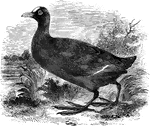
Common European coot
Averaging about sixteen inches in length, the common coot of Europe is found throughout Europe and Asia.

Cormorant
The Cormorant "P. carbo, but has a tuft of long narrow recurved plumes on each side f the crown in the…

Red-faced Cormorant and Nest
"Phalacrocorax bicristatus. Red-Faced Cormorant. Frontal feathers not reaching base of the culmen, the…
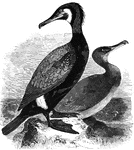
Black cormorant
The black cormorant averages about three feet in length, and is found in Greenland, as well as a long…
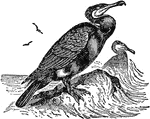
Double-crested Cormorant
The Double-crested Cormorant (Phalacrocorax auritus) is a member of the cormorant family of seabirds.…

Double-crested Cormorant
"Phalacrocorax dilophus. Double-crested Cormorant. Tail of 12 feathers. Gular sac convex behind. No…
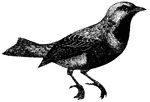
Cotinga
The Cotinga is remarkable during the pairing season, for its brilliant and variegated plumage,(Figuier,…



